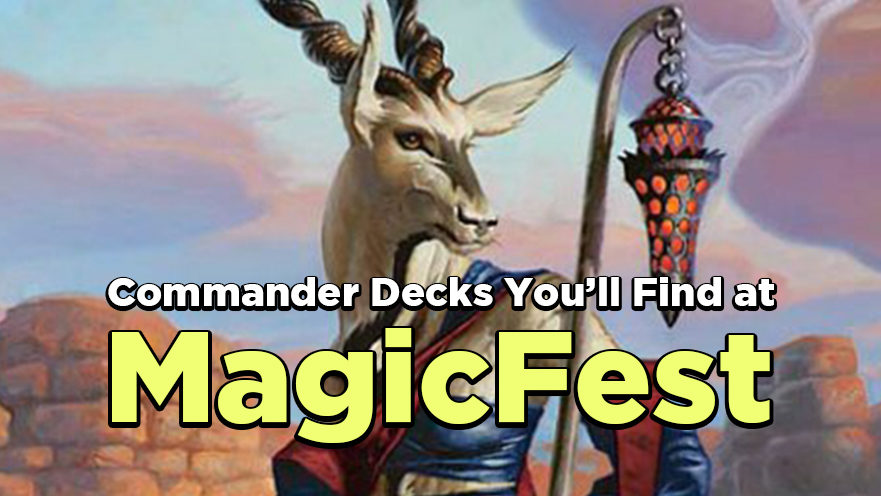Commander is Magic‘s most beloved casual format. It doesn’t rotate, there’s no restrictive legality rules, and it’s built with big, splashy multiplayer games in mind. Anyone can build a Commander deck, often at a fraction of the cost of competitive Constructed formats. Nowadays, Wizards even creates specific products to support Commander, like the Commander 2019 decks.
Best of all, Commander emphasizes the creativity and discovery that are at the heart of the Magic experience. Any pet card can have its day, and you can wow your friends with weird and wonderful combos. You can build a Commander deck and reasonably say that nobody on earth plays one exactly like it.
But, as big as the Magic card pool is, it isn’t infinite. Over the years, the design of the game has coalesced around certain pillars of gameplay. These pillars form the basis of common Commander archetypes, and the singleton rules make specific card combos less important than deck synergy.
So, if you play Commander for long enough and against enough people, you’ll start to feel like you’ve seen certain decks before. It’s worth noting that this is not necessarily a bad thing. Commander places a heavy emphasis on doing things that are original and unique to you, but, as in other Constructed formats, it’s important to anticipate what cards your opponents could play.
By learning these archetypes, you can make next-level plays and keep yourself in the game against unknown opposition. You can also use this knowledge to guide your own deckbuilding choices!
So, here they are: the seven types of Commander decks you’ll find at MagicFest tables — and how to stop them.
DECK 1: COMBO-CONTROL, AKA “GOOD STUFF”
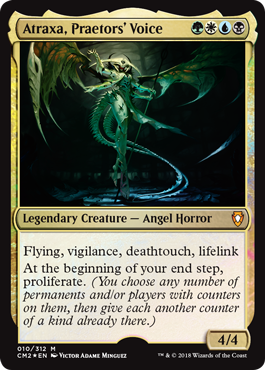
Common Colors: Any, but often 3+ including blue.
Common Commanders: Any.
The first piece of information you get to identify an unknown deck is the commander. Often, the commander’s abilities, colors, or type will give some clue as to what the deck wants to do. But sometimes, the enemy deck doesn’t have a specific plan – they’re just here to play all the best cards.
These decks can feature any commander, but they usually include one whose abilities grant free card-draw or cost reduction. They start by accelerating their mana while establishing a minimal defense, then draw heaps of cards or play advantage-building permanents like Planeswalkers. They use removal and countermagic defensively or to stop others from snowballing, all while waiting for the moment to strike.
I dub these decks combo-control because the Commander format encourages infinite combos. When there are three or more players trying to stop you, the best plan is one that eliminates them all at once. Be wary of Doubling Season, Sanguine Bond/Exquisite Blood, Peregrine Drake, or any card that exchanges resources at no additional cost.
But really, the exact combo doesn’t matter – these decks usually play plenty of different ones. The best course of action is to shut down their resource engines, put them on a clock, and hold up instant-speed interaction at all times to stop them from going for it.
DECK 2: VOLTRON
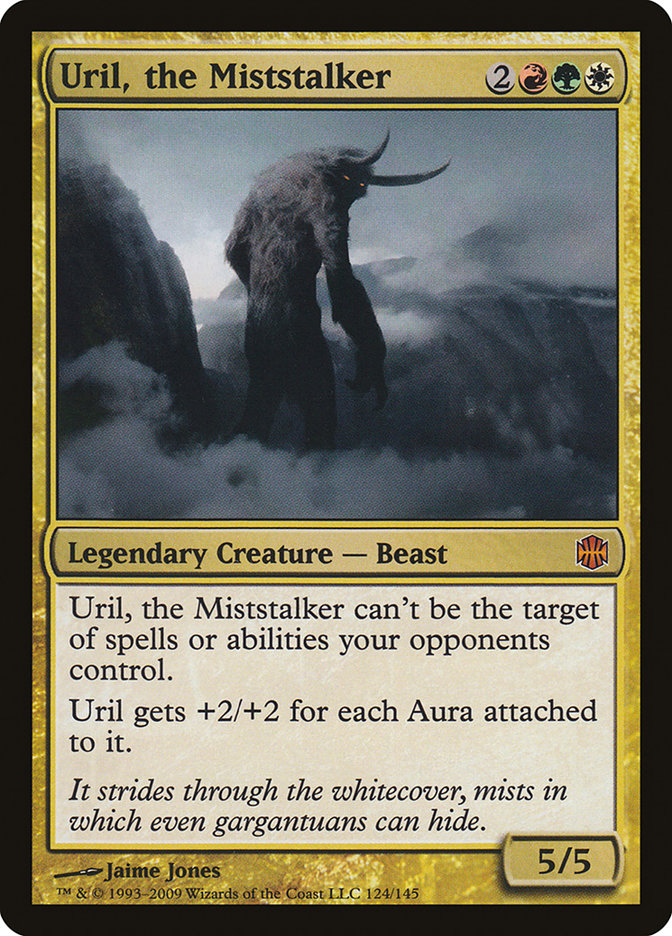
Common Colors: White, Green
Common Commanders: Rafiq of the Many, Uril, the Mist-Stalker, Balan, Wandering Knight
These decks aim to deal 21 points of combat damage to each opponent with their commander. Some Voltron commanders can deal damage easily on their own — think Scion of the Ur-Dragon or Jenara, Asura of War. But mostly, these decks help their commander by attaching various auras and equipment — like assembling a giant killer robot! If you see a commander that cares about auras or equipment, think about how you can stop it from hitting you.
Cheaper Voltron commanders are especially deadly because they will often get a few “free” hits in before you mount a good defense, and that commander damage never goes away. Keeping removal pointed at their commander becomes even more important, especially since they’re likely to have cards like Lightning Greaves.
Prioritize blocking the commander whenever you can (even chump blocking), and try to slow them down by removing their commander. Cards like Song of the Dryads or Gideon’s Intervention, which negate a commander’s abilities, are also massive.
DECK 3: ARTIFACTS
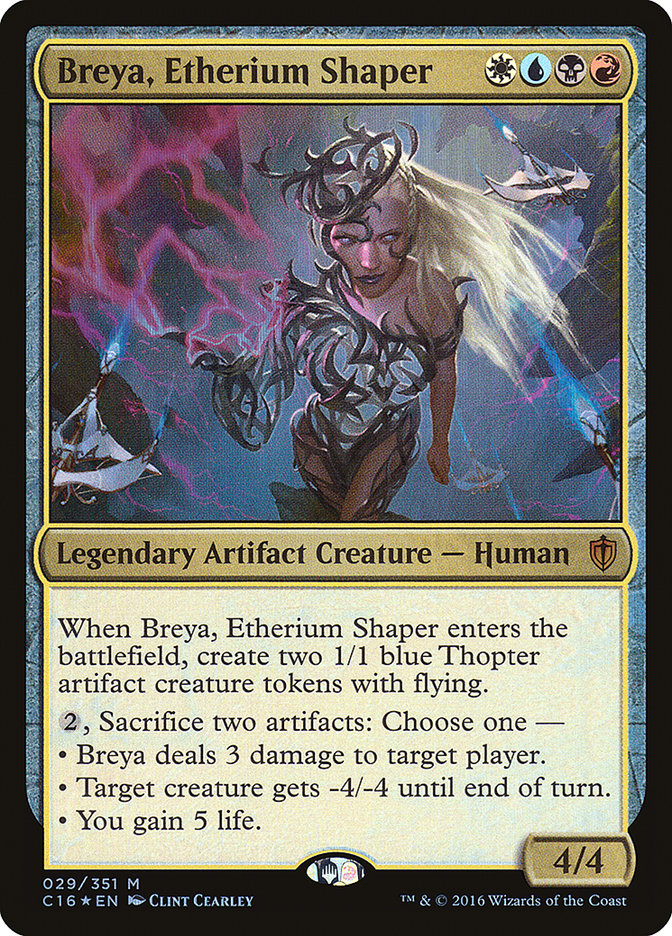
Common Colors: Blue, Red
Common Commanders: Breya, Etherium Shaper, Urza, Lord High Artificer, Daretti, Scrap Savant
Artifact synergy decks run rampant in every eternal format, and Commander decks can play all the same cards. Artifacts have a ton of advantages: easier mana, better ramp, great creatures, and potent subthemes, such as graveyard use or +1/+1 counters. When you can easily have 70 artifacts in your 100-card deck, synergy effects like Foundry Inspector, Cranial Plating and Saheeli, the Gifted start to feel overpowered.
The main strength of this theme is its depth and quality of support. Artifacts have been around forever, and they have good creature beatdown, lethal combos, and strong value effects. The biggest drawback is being extra weak to artifact removal, but that’s not really something you can adapt to mid-game.
Make sure every deck you build packs a good amount of artifact removal, and try to include one or two cards which destroy all artifacts (Shattering Spree, Akroma’s Vengeance, Aura Shards). Your opponent may also play a higher concentration of mana rocks and other low-impact cards; remove the “payoff” cards like Breya and then pummel them while they try to draw more.
DECK 4: TRIBAL
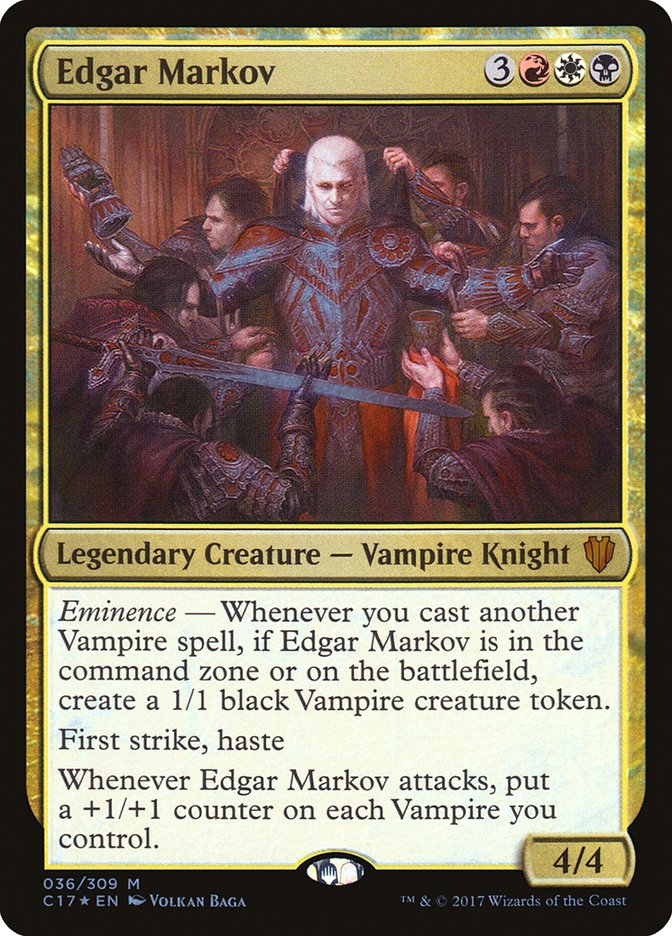
Common Colors: Any
Common Commanders: Morophon, the Boundless, Edgar Markov, Ezuri, Renegade Leader
Tribal decks are the most popular type of casual deck for the same reasons Commander has become the most popular casual format. They give players a strong sense of identity, and you can build powerful decks cheaply by using specialized cards that nobody else wants. If your opponent’s commander references a creature type, or is simply a member of a popular type like Zombies or Goblins, expect a tribal deck.
Creature decks are generally slightly disadvantaged in Commander. It’s hard to attack each player from 40 to 0 before someone casts a board-wipe. However, going wide quickly and then buffing your whole team is still among the most efficient ways to knock a player out. And “lords” (creatures that buff all creatures of a specific type) are one of the most efficient ways to do that. Plus, tribal decks can often take advantage of extra card draw and cost reduction.
Most tribal decks rely on attacking one player at a time, so you need to avoid being the softest or most threatening target. It can even be a good choice to build a political alliance with a tribal deck player… so long as you have a sweeper ready when it’s time to turn on them! Try to keep killing their creatures as fast as they’re played, since each one on board makes the others stronger.
DECK 5: GROUP HUG
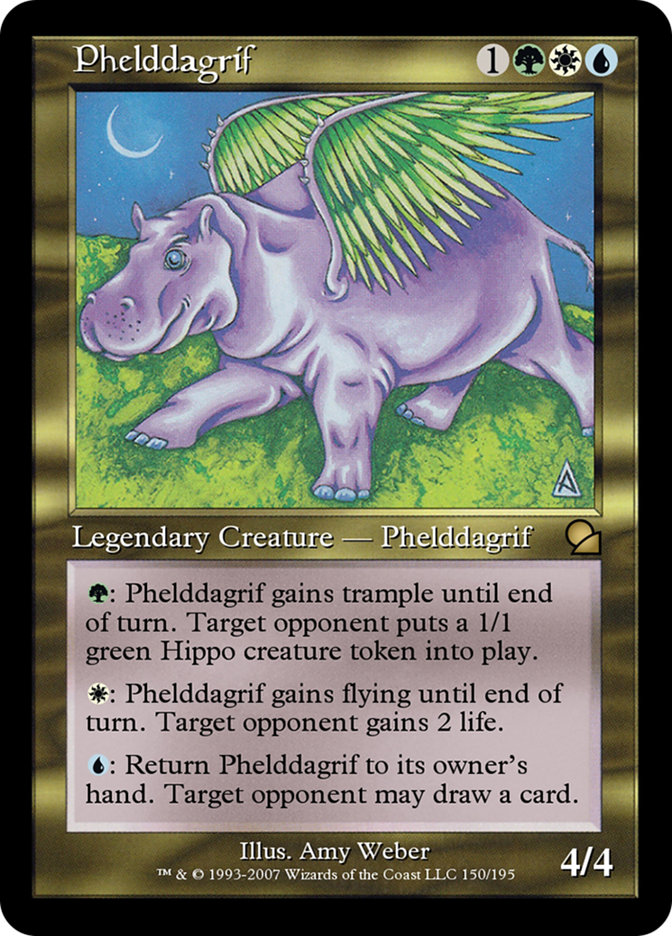
Common Colors: Green, White, Blue
Common Commanders: Phelddagrif, Zedruu the Greathearted, Kynaios and Tiros of Meletis
Where other Commander archetypes are defined by their mechanical synergies, Group Hug is more of a philosophy. Phelddagrif is one of the oldest and most beloved commanders in the format, and its rules text gives you an idea of how these decks play. Expect beneficial effects which power up all players or help specific opponents, giving the Group Hug player a dominant position in table politics.
It’s worth noting that some Group Hug players aren’t really concerned with winning. Their vision of fun starts and ends with giving everyone heaps of free resources and watching the fireworks. However, you should not underestimate the ability of these decks to win games. It’s easy to break the symmetry of Group Hug effects and take advantage of such a resource-rich environment.
Pay attention to the specific commander in use, as the popular Group Hug options each have different payoffs. Zedruu in particular can feel much more aggressive than others, since she can use her ability to donate harmful permanents.
DECK 6: GRAVEYARD
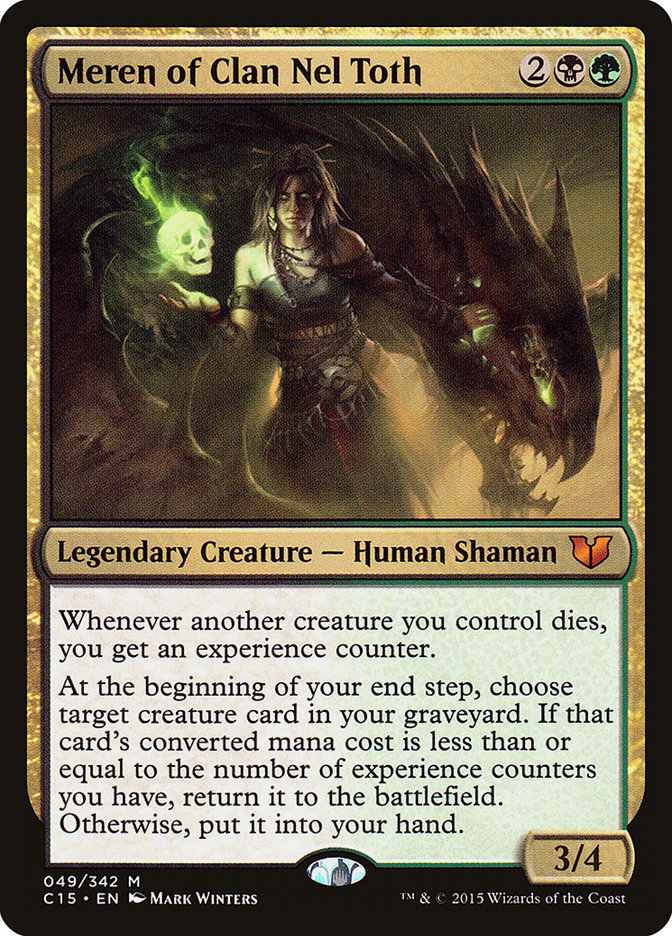
Common Colors: Black, Green
Common Commanders: Meren of Clan Nel Toth, Sidisi, Brood Tyrant, The Gitrog Monster
Almost every Commander deck, regardless of theme or color, will use the graveyard in some way. The grindy, singleton, value-driven nature of the format demands it. But some decks can leverage their graveyards quickly and more efficiently than others. If a commander puts cards into the graveyard, counts cards in graveyards, or has a recursion effect built in, reach for your Relic of Progenitus.
In terms of play style and win condition, these graveyard decks resemble Combo-Control. They tend to play generically powerful cards, including any number of winning combinations they can stumble into assembling. The difference is speed – putting cards into play from the graveyard is often much cheaper than casting them, and milling yourself is easier than drawing cards.
This extra access to cards makes graveyard decks even more consistent. They can be explosive thanks to “free” creatures like Bloodghast and cost-reduced delve spells. And, of course, they’re very good at attrition.
More than any other Commander strategy, dedicated graveyard decks require consideration when you put your Commander deck together. Cards like Relic of Progenitus, Nihil Spellbomb, and Scavenging Ooze allow you to hedge against graveyard decks, but aren’t “dead draws” against other opponents. But the graveyard is used so often in Commander that even “sideboard cards” like Tormod’s Crypt are perfectly acceptable and common to play. Keep these cards in mind – they just might save you against graveyard-focused decks.
DECK 7: CHAOS
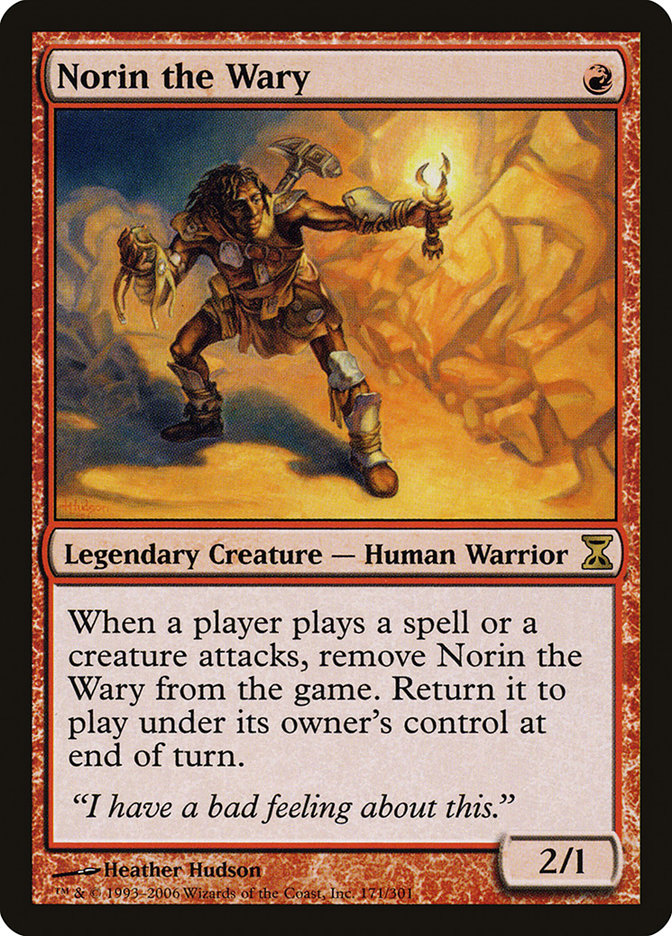
Common Colors: Red, Blue
Common Commanders: Okaun, Eye of Chaos & Zndrsplt, Eye of Wisdom, Norin the Wary, Zedruu the Greathearted
Key to this archetype are two observations I made when discussing Group Hug. First, some Commander decks are defined by a philosophy rather than specific synergies. And second, not every Commander player is actually trying to win games. Some just want to watch the world burn, and they usually play Blue-Red Chaos.
Chaos decks play weird enchantments you’ve never heard of and flip coins a lot. Their goal is to add variance and complicated stack effects to the game so nobody can execute a coherent plan. They embody the “Commander is about cool stories” approach; you’ll never believe what happens when Eye of the Storm, Grip of Chaos, Hive Mind, and Possibility Storm are all in play at once!
Some Chaos decks include serious win conditions (Chance Encounter is a favorite), while many others have no plan at all. Still, this is the kind of deck that you might want to discuss with your group before you bring it to the table. If somebody really wants to create a kooky board state, they should get a chance. But they may find that other players consistently gang up on them – because they want to be able to resolve their spells in peace! Try to find a compromise so that everyone gets a chance to play their deck as intended.
PLAYING THE FIELD
Now, you should have a good understanding of what you’ll face from many Commander opponents after the first few turns. Remember that the commander is key – the vast majority of Commander deckbuilding starts with the commander itself. Whether you’re competing for prizes at events or for bragging rights at the kitchen table, may this knowledge grant you newfound confidence in your Commander play!

Tom’s fate was sealed in 7th grade when his friend lent him a pile of commons to play Magic. He quickly picked up Boros and Orzhov decks in Ravnica block and has remained a staunch white magician ever since. A fan of all Constructed formats, he enjoys studying the history of the tournament meta. He specializes in midrange decks, especially Death & Taxes and Martyr Proc. One day, he swears he will win an MCQ with Evershrike. Ask him how at @AWanderingBard, or watch him stream Magic at twitch.tv/TheWanderingBard.

